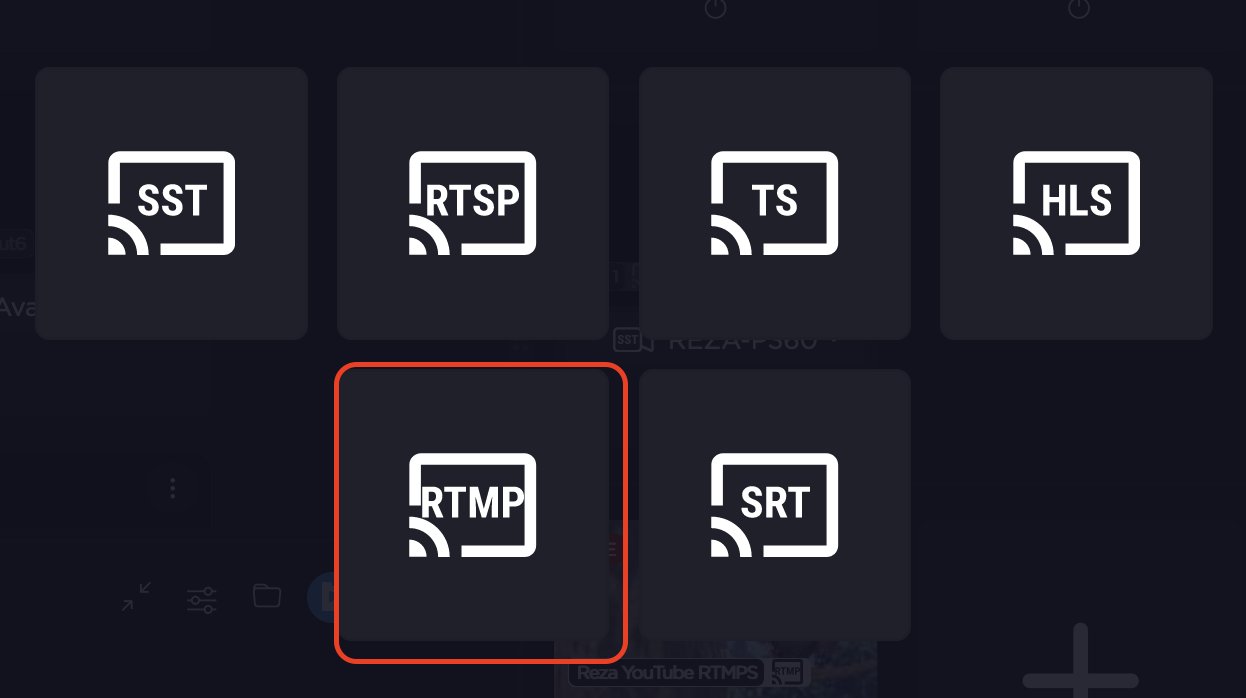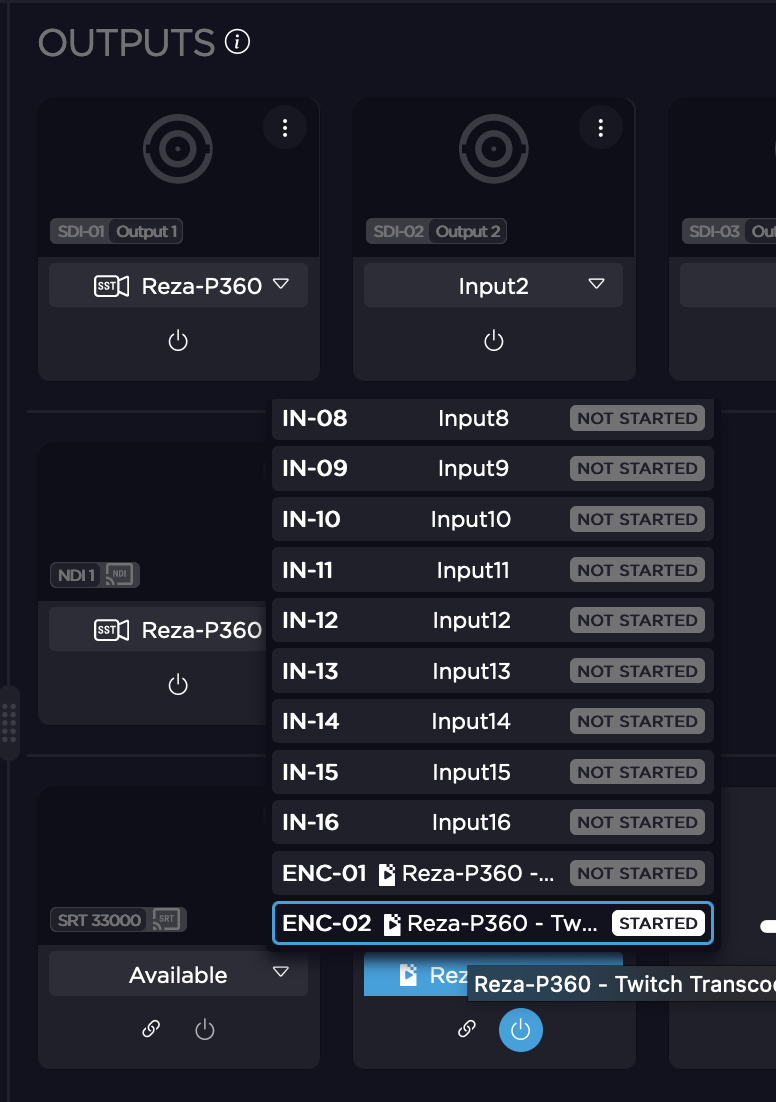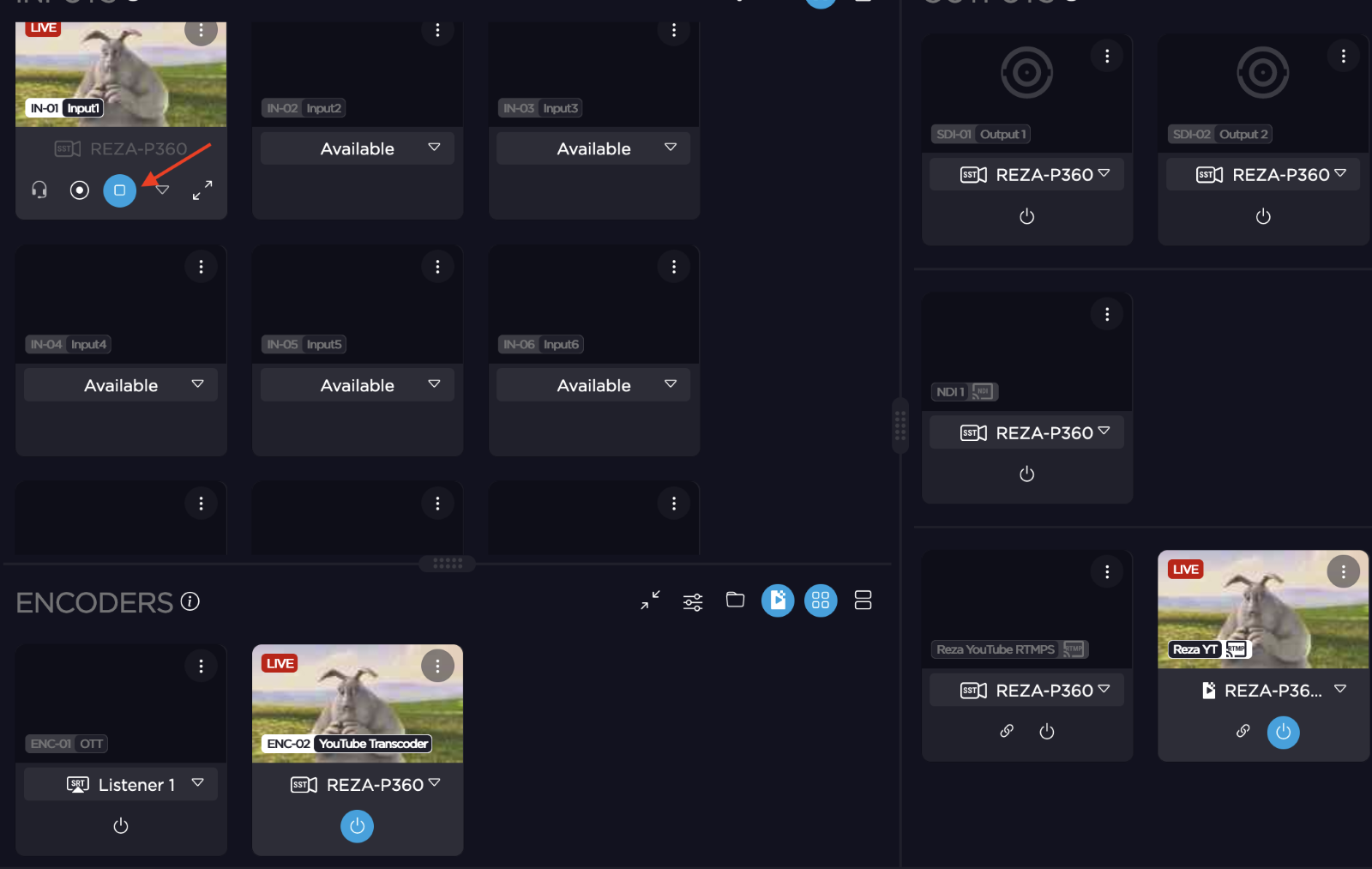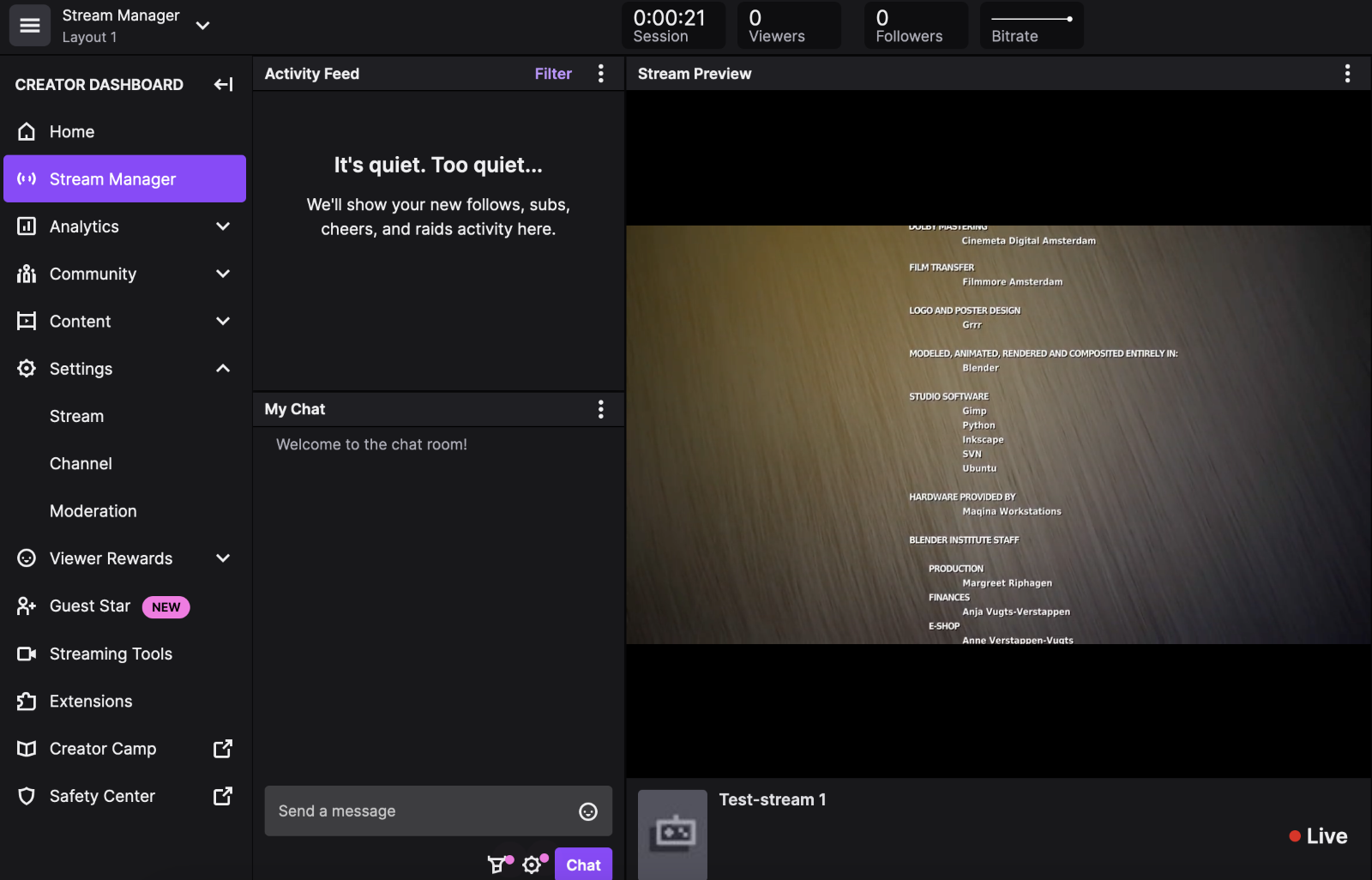Streaming to Twitch.Tv
Purpose
StreamHub can be configured to output streams using the RTMP or RTMPS protocol for streaming to social media platforms such as Twitch.tv.
Prerequisites
StreamHub license
IP Output license (AW-OR-OIP)
Firewall and network configured to allow RTMP output
Twitch account
Note
A StreamHub Live Encoding license (AW-OR-ENC) may be required depending on the characteristics of the input stream from the transmitter/encoder.
Procedure
Obtain your Twitch.tv nearest ingest point from this link: https://help.twitch.tv/s/twitch-ingest-recommendation?language=en_US
For example if you are in Tokyo area then naturally you will select one of the Tokyo ingest points:

Log in to your twitch.tv account.
Go to Creator Dashboard -> Settings -> Stream and set up your Stream Key in the Twitch Dashboard.
Typically the stream key is generated automatically by Twitch. If for any reason you want a new one, click the Reset button. Copy this stream key and keep it in the clipboard for use later in this procedure.

In a separate browser tab, access your StreamHub server.
To create a new RTMP IP Output in StreamHub, click on the (+) icon in the IP Output section and click the next (+) button under IP Output Profiles.

Click on the RTMP protocol button to create an RTMP output profile.

Configure the RTMP profile using the Stream URL and Stream Key from Twitch (refer to step 3 above).

Save the RTMP IP Output profile.
Select the RTMP IP Output profile by clicking on the associated radio button. An IP Output with the selected RTMP profile is enabled.

Configure a StreamHub Encoder.
Important
As per Twitch specifications (see https://stream.twitch.tv/encoding/ ) there are certain requirements for the video / audio codec as well as for resolution and frame rate. If the source transmitter is sending in a non-supported configuration such as HEVC then a “Codec not supported” error will appear in the StreamHub RTMP output. In such cases, it is necessary to transcode the stream first using the StreamHub encoder function to make it compatible with Twitch specifications.
Select the saved Encoder Profile by clicking the associated radio button. An Encoder with the selected Encoder profile is enabled.

Link the workflow from Input > Encoder > Output. This allows the input stream to be transcoded first to the Twitch compatible format before outputting the stream to Twitch. There are two methods:
Method A: Drag and drop the desired input icon onto the Encoder, and then drag and drop the Encoder onto the Output icon.
Method B: From the Encoder drop down, select the input to be transcoded, and then select the Encoder in the output drop down to output to Twitch.


The input is now assigned to the Encoder for transcoding to a Twitch.tv compatible format, and the transcoded stream is set to output to the Twitch RTMP ingest point configured under RTMP IP Output.
If the stream is not already live, click the Live button on the input (or from the transmitter unit) to start live streaming.

The live stream should appear in the Twitch Stream Manager:


